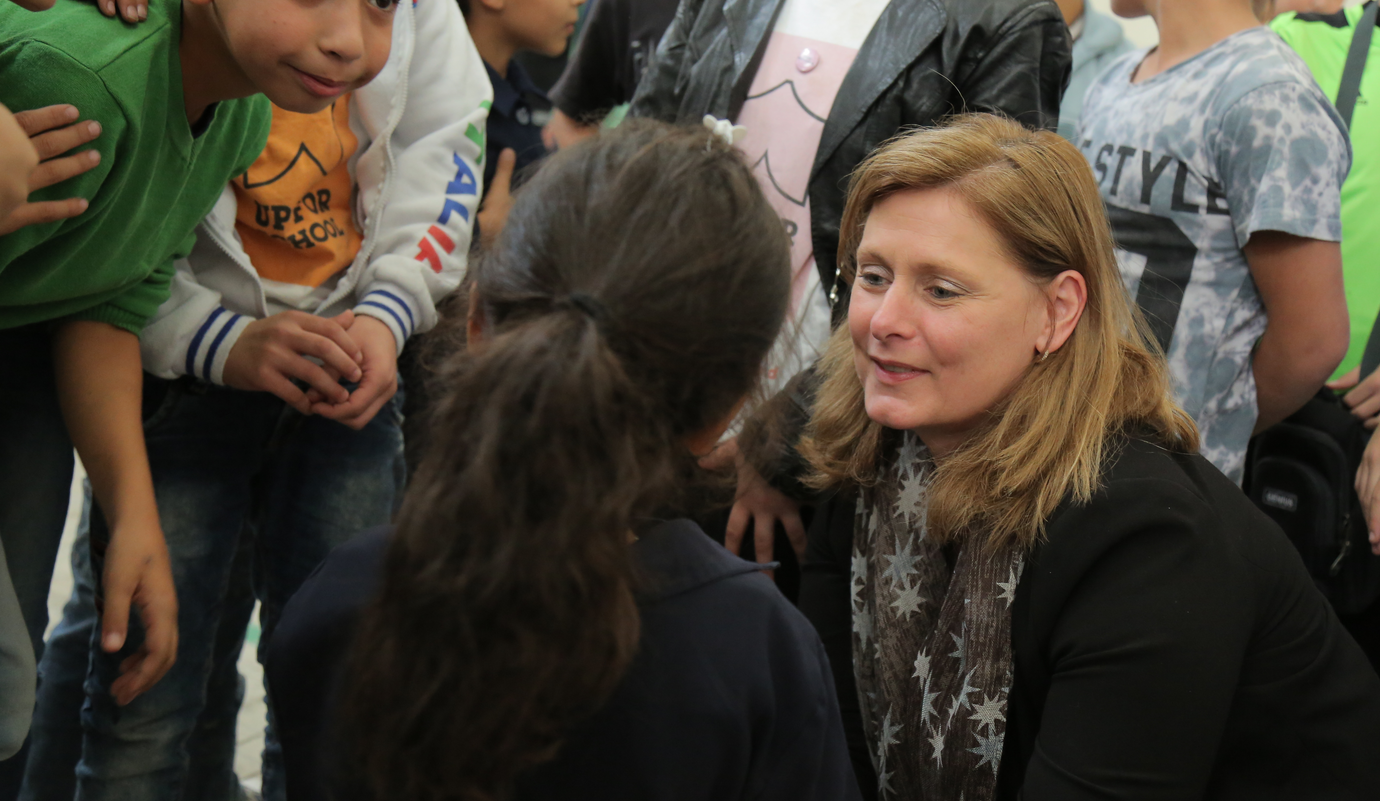
Why many girls in Brazil drop out of school and into child marriage
Child marriage
Jo Griffin is a freelance journalist for the Guardian, Observer, BBC and Al-Jazeera. She has also worked as a journalist in Mexico, Central America and Brazil.
A lack of job opportunities, teenage pregnancy and violence at home push girls in Brazil to marry older husbands, according to research.
The report by gender equality organisation Promundo lifts the lid on child marriage in the country that ranks fourth in global numbers for the practice but where it is rarely tackled or discussed.
“Child marriage is widely accepted in Brazil,” said Alice Taylor, lead author of the report that is the first study of the practice in a society where, unlike in other child marriage “hotspots” such as Asia or Africa, girls are not forced to marry.
The report – titled She Goes with Me in My Boat – also takes the first close look at the intersection of child marriage and education.
“In Brazil, there is a type of ‘agency’ in the marriages of girls,” said Taylor, in a phone interview. “They are not forced into marriages in the same way [as in other regions]. There is the agency of girls who want to leave behind the family home and become more independent. Then, there is disappointment.”
In Brazil, marrying as an adolescent increases the risk of a girl experiencing domestic violence and leaving education, with girls either leaving school after they marry or marrying after dropping out of school.
According to the latest Brazilian census, in 2010, just over 88,000 girls and boys (aged 10-14) were in unions categorised as consensual, civil or religious.
Around 877,000 women between 20-24 reported having been married by age 15, which would make Brazil fourth in the world in terms of numbers of girls who are married or co-habiting by age 15.
The law permits Brazilians to marry at 16 if their parents agree and earlier in the case of pregnancy.
Researchers from Promundo, Plan International and the University of Pará interviewed married girls – and men – in the states where rates are highest – Para, in the north, and Maranhao, in the Northeast, to build a picture of what drives girls into marriage – and what are its consequences.
Source: Child and Adolescent Marriage in Brazil report
They found that in Brazil unions involving girls under 18 have several distinct characteristics
- They are informal and consensual in nature
- Girls usually marry in their early teens rather than as young as at 10 or 12
- Age gaps tend to be smaller, with the husband typically nine years older
- Girls may choose to marry because they believe marriage offers security
Her family may pressure a girl into marriage if she is pregnant and early marriage exacerbates the risk of teenage pregnancy.
According to the World Health Organisation, complications in pregnancy and childbirth are the second highest cause of death for 15-19-year-old girls globally.
Many girls interviewed for the report expressed disappointment that marriage had curtailed their freedom, and conveyed a sense of “captivity”, as well as regrets at having left education.
For one girl in Belém, who had married her 21-year-old partner at 15 after falling pregnant, marriage meant isolation. She said: “Are married women really meant to stay at home all day staring at the walls?”
Another girl aged 15 said: “If I wasn’t married, I’d be in school. Life would be much better … In that sense, not having a husband, not having married, not getting pregnant, I think my life would be a little easier, much better … I should have taken more advantage of my life.”
A body of research has shown earlier that in Brazil the main reason for interrupting studies is pregnancy or children, and that early pregnancy and marriage lead to poor educational outcomes.
In many areas of Brazil, rural and urban, educational provision is so poor that it leads to low expectations of girls getting a good education, and offers girls little motivation to stay in school.
Marriage to an older man may even be seen as an alternative education – a type of training for life.
Source: Child and Adolescent Marriage in Brazil report
Taylor said: “There is also an element whereby marriage is seen as a form of substitute education – that the girls will learn from their husbands; how to cook or run a house, for example. Marriage is equated with education.”
Luca Sinesi, programme director of Plan International Brazil, said from Maranhao: “We need to shows girls and boys marriage is a possibility but it is not the only one … if we had more opportunities for education, for learning, there would be fewer marriages in adolescence because girls would understand clearly what marriage is. Lack of information is often the reason for a wrong choice.”
Since it was published in July, the report has prompted fresh debate in Brazil about its National Education Plan, (PNE) which bans discussion at school of sexuality and the inequitable gender norms that underpin child marriage.
Proposals to bring these topics into the classroom have met resistance from religious groups and politicians. “Prohibiting these discussions doesn’t just harm people, it limits their possibilities,” said Sinesi.
Taylor added: “Until we can talk about gender norms and sexuality in the classroom [in Brazil], we will never be able to address child marriage.”
These norms include the pervasive objectivising of adolescent girls and assuming control of their sexuality, said Sinasi, adding that teenage girls’ bodies are objectified in music and the media across all social classes.
There is a notion that men are owners of young girls and the expectation that girls are ready for sexual relationships as soon as they enter puberty.
Linked to this, he said, are high rates of sexual violence against girls and women in Brazil; the Forum of Public Security recorded 42,000 cases of rape in 2014, conceding that the true figure was likely to be 10 times higher. Plan’s campaign Quanto Custa addresses sexual violence.
In addition, Promundo and Plan focus on teaching girls and boys about gender equality and running workshops with men that tackle the question, as Taylor puts it” “Why do you want to marry a young girl?”
A UNICEF report in 2014 found that 700 million women today were married before their 18th birthday, and that progress on reducing child marriage is not happening fast enough. Ending child marriage is one of the new global Sustainable Development Goals.
Until recently, child marriage in Latin America has been overlooked. For those working to reduce it in Brazil, said Sinesi, a first step is for society to “stop closing its eyes” to an issue that has become normalised.
Read about the ‘hidden’ problem of child marriage in Latin America
Learn more about the effects of child marriage on education.
More news

